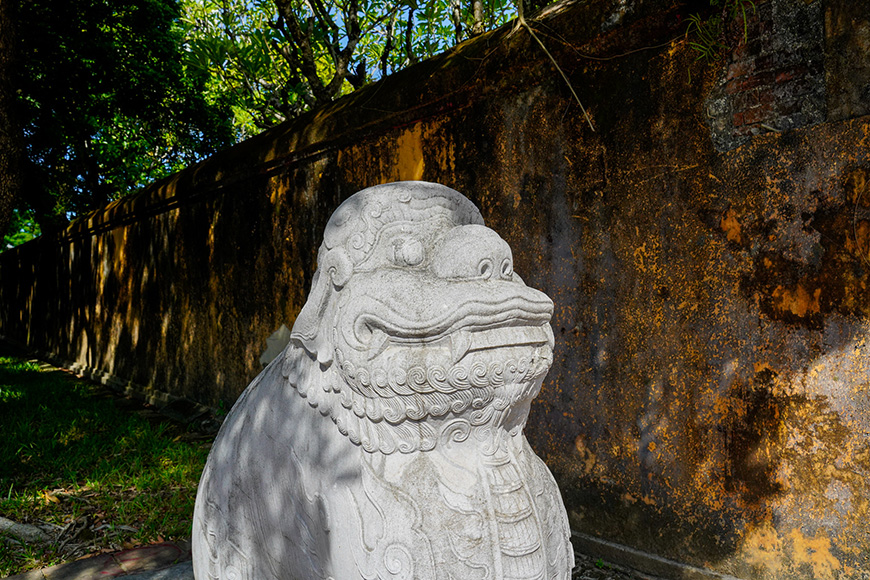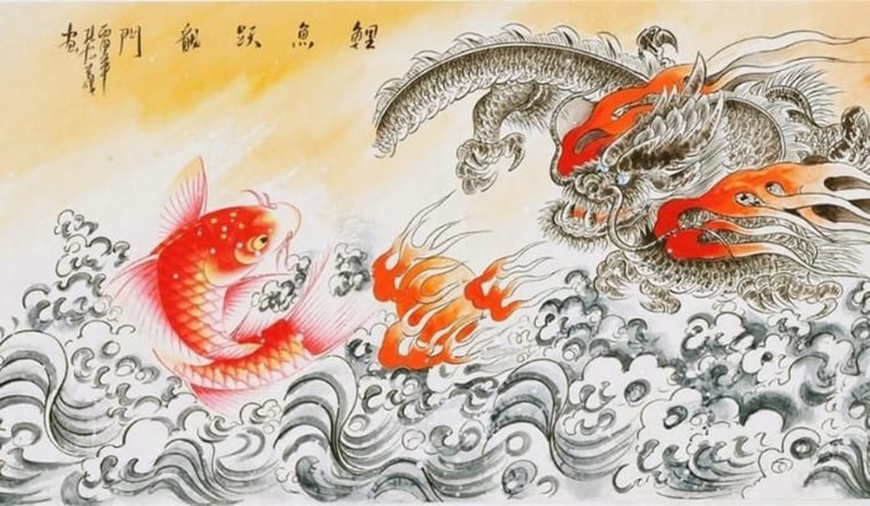Vietnamese culture, rich and fascinating, is enriched by the presence of 27 symbolic animals. These creatures, stemming from ancestral legends or forged by popular imagination, embody the forces of nature and possess supernatural powers. They are much more than mere animals: they are deep cultural symbols, reflecting national identity and Vietnamese values. Here are the most emblematic.

Dragons play a significant role in Vietnamese culture - Source : Mr Linh's adventure
The Four Sacred Animals
The Dragon (Long)
The dragon, majestic and powerful, is the most important sacred animal in Vietnam.
Often associated with rain and land fertility, the dragon symbolizes power and prosperity. Its significance is such that the Vietnamese consider themselves descendants of a dragon, Lạc Long Quân, and a fairy, Âu Cơ, who are said to have given birth to a hundred children, including the illustrious eldest, Hùng Vương, who is considered the founder of the Vietnamese nation.
The dragon, a mythical and tutelary creature, played a fundamental role in the construction of Vietnamese identity. From the foundation of Thăng Long, where it symbolized the nation's rise, to its presence in popular legends, it has been associated with the protection and prosperity of the kingdom. Its image, omnipresent in art and architecture, was closely linked to royalty. Every object used by the emperor, from the bed to his chariot – dragon bed, dragon chariot, and even dragon cloak – was adorned with dragon motifs, thus attesting to his divine status.
The dragon is ubiquitous in Vietnamese culture. It enlivens traditional dances, adorns the prows of boats, and inspires many popular games. In temples, pagodas, and palaces, it reigns supreme, often depicted with its twelve coils, symbolizing the months of the year.

Ky Lan is a mythical creature, often referred to as the "Vietnamese unicorn - Source : Mr Linh's adventures
The Vietnamese Unicorn (Ly/Lân)
Second in the list of the four sacred animals, the unicorn - along with the dragon, phoenix, and turtle - forms a symbolic quartet representing the four elements and cardinal virtues.
Ky Lan is the Vietnamese version of the Chinese Qilin, which has been adapted and Vietnamized over time. Although they share some similarities, there are some notable differences between the two mythical creatures. And contrary to the Western image of the unicorn, the Vietnamese unicorn is a hybrid creature, part dragon, part lion, with sometimes elements borrowed from the horse and buffalo. It may have one or two horns that are completely harmless. Guardian of sacred places, it adorns the roofs of religious and imperial buildings.
Did you know? The unicorn dance is an ancient Vietnamese tradition performed during festivals and ceremonies. It is considered a way to drive away evil spirits and bring good fortune. It is notably performed during inaugural ceremonies, such as the Lunar New Year or the opening of a commercial establishment, to invoke prosperity and good fortune.

Turtles hold a significant place in Vietnamese culture - Source : Internet (Ngoc Son temple, Hoan Kiem, Hanoi)
The Turtle (Quy)
The only real animal among the four, the turtle, a symbol of longevity and wisdom, holds a central place in Vietnamese cosmogony.
Carrying the celestial dome on its back, it is associated with the creation of the world and the transmission of knowledge.
Vietnamese mythology pays tribute to at least two legendary turtles. The first is said to have assisted King An Dương Vương in building the citadel of Cổ Loa (in the 3rd century BC), while another is said to have given Lê Lợi the sacred sword that allowed him to liberate the country. It was at Hồ Hoàn Kiếm that he returned the sword to his benefactress, thus marking a pivotal moment in Vietnamese history.
It can also be found in stories of the world's creation and the birth of Vietnamese civilization.
Finally, in temples and pagodas, it is depicted carrying a stele or manuscript on its back, symbolizing the transmission of knowledge and the protection of sacred places. At the Temple of Literature in Hanoi, there are 82 doctorate steles, all placed on turtle shells.

The Viet people believe that a phoenix bodes well for those areas where it settles - Source : Internet
The Phoenix (Phụng)
Phượng Hoàng is a mythical creature associated with rebirth, immortality, and beauty.
Physically, it presents an improbable and fascinating assemblage: a dreamy goose head, an agile swallow chin, a crooked chicken beak, a sinuous snake neck, a sturdy turtle body, a scaly fish tail, and a dazzling peacock tail. A true kaleidoscope of nature.
Often associated with the empress, it forms with the dragon a symbolic couple representing cosmic harmony, the union of heaven and earth, masculine and feminine, yin and yang. Symbolizing perfect union and marital happiness, its representation is ubiquitous in traditional Vietnamese weddings, especially on the bride's dress. Although its legends are less known than those of the dragon, it represents peace and prosperity, appearing only in times of calm and prosperity.
Together, this band of four is called "Tứ Linh" or "Tứ Thánh Thú," and represents the desire to achieve happiness and prosperity. They are omnipresent in Vietnamese architecture, decoration, literature, and arts.

According to some historical records, the Nghê is a mythical creature, originating from Buddhism. - Source : Mr Linh's adventure
A Distinct Emblematic Animal, the Nghê
This chimera, a mix of a dog, lion, and dragon, completes this sacred bestiary. A protector against evil spirits, it has adorned religious architecture since the 15th century, testifying to its enduring cultural importance. It also embodies natural forces and possesses supernatural characteristics in Vietnamese culture. Interestingly, it has evolved from the Chinese qilin over the centuries to become a unique figure in Vietnamese culture.
Did you know? The first Nghê statues appeared in the 15th century, and the figure became popular from the Ly dynasty to the end of the Tây Son dynasty (from the 11th to the 18th centuries). Over the past eight centuries, the Nghê has been an essential animal for rituals, both in sacred places and among the people. It has even appeared in some churches due to cultural exchange. At times, the animal has been used as a paperweight or hanger in pagodas.

Quy Hac is associated with the fairy, so where there is a crane, there is a fairy - Source : Internet
Other Symbolic Animals
Although less sacred, other animals are also symbolic in Vietnamese culture:
- The Koi Carp, as in many Asian cultures, is a sacred fish with deep symbolic significance. It is often associated with perseverance, determination and social advancement.
- The crane - a mascot of Taoism, a symbol of nobility and immortality
- The tiger - a symbol of strength and courage
- The monkey - a symbol of intelligence and adaptability
- The whale, sacred on the central coasts of Vietnam, is honored in many fishing villages that pay homage to it in what is known as the "whale cult," a set of ceremonies that honor the spirit of a
- The water buffalo, indispensable companion of Vietnamese farmers, is considered a full-fledged member of the family. It symbolizes strength, patience and loyalty, and is particularly celebrated during the Tich Diên festival, which marks the start of agricultural work.

The legend of the "carp turning into a dragon" has its roots primarily in Chinese mythology - Source : Internet
Conclusion
The Vietnamese bestiary bears witness to the country's rich culture and spirituality. These animals, symbols of profound values and ancestral legends, continue to inspire the Vietnamese and shape their national identity. They are a precious cultural heritage, both fascinating and inspiring.